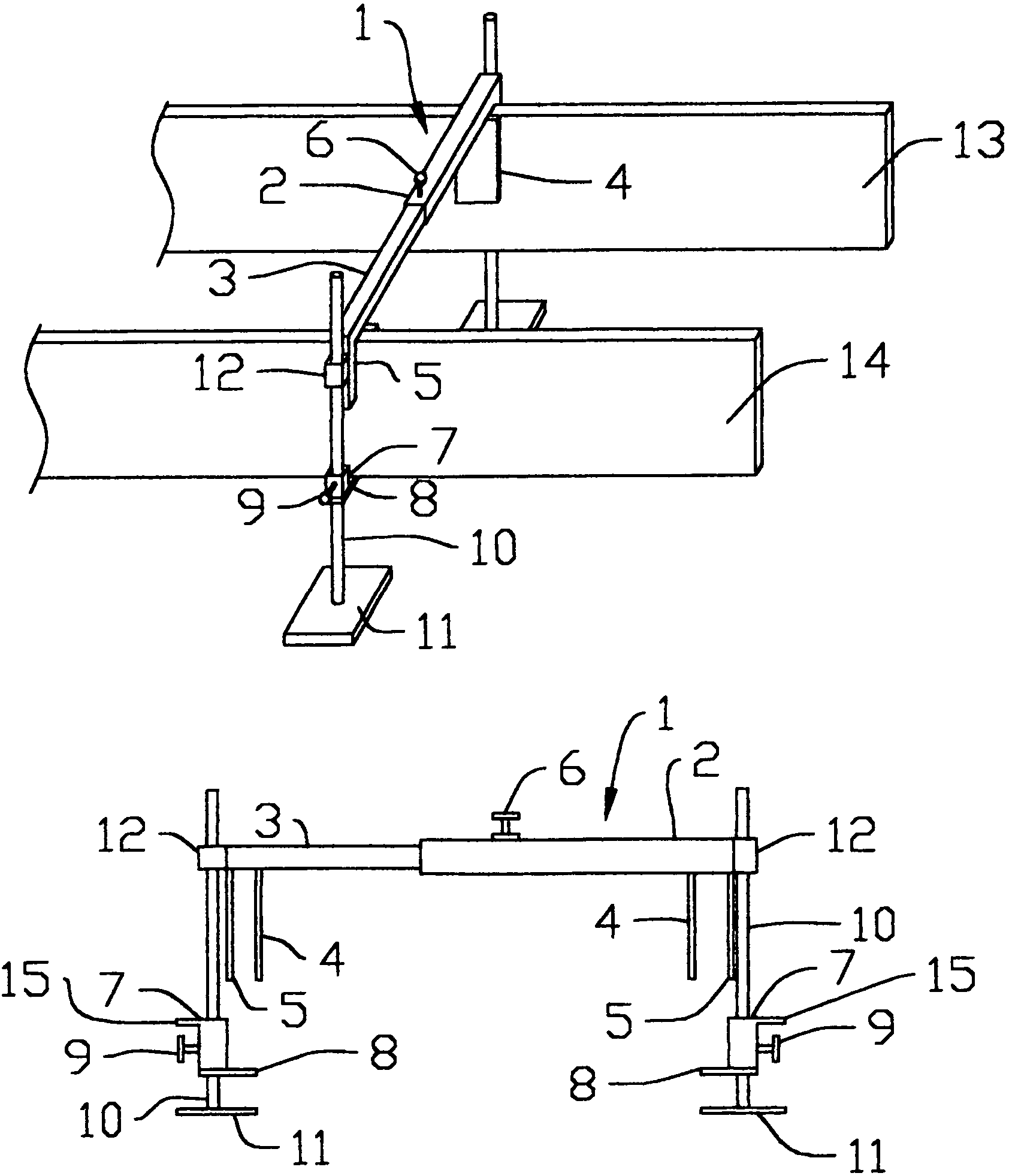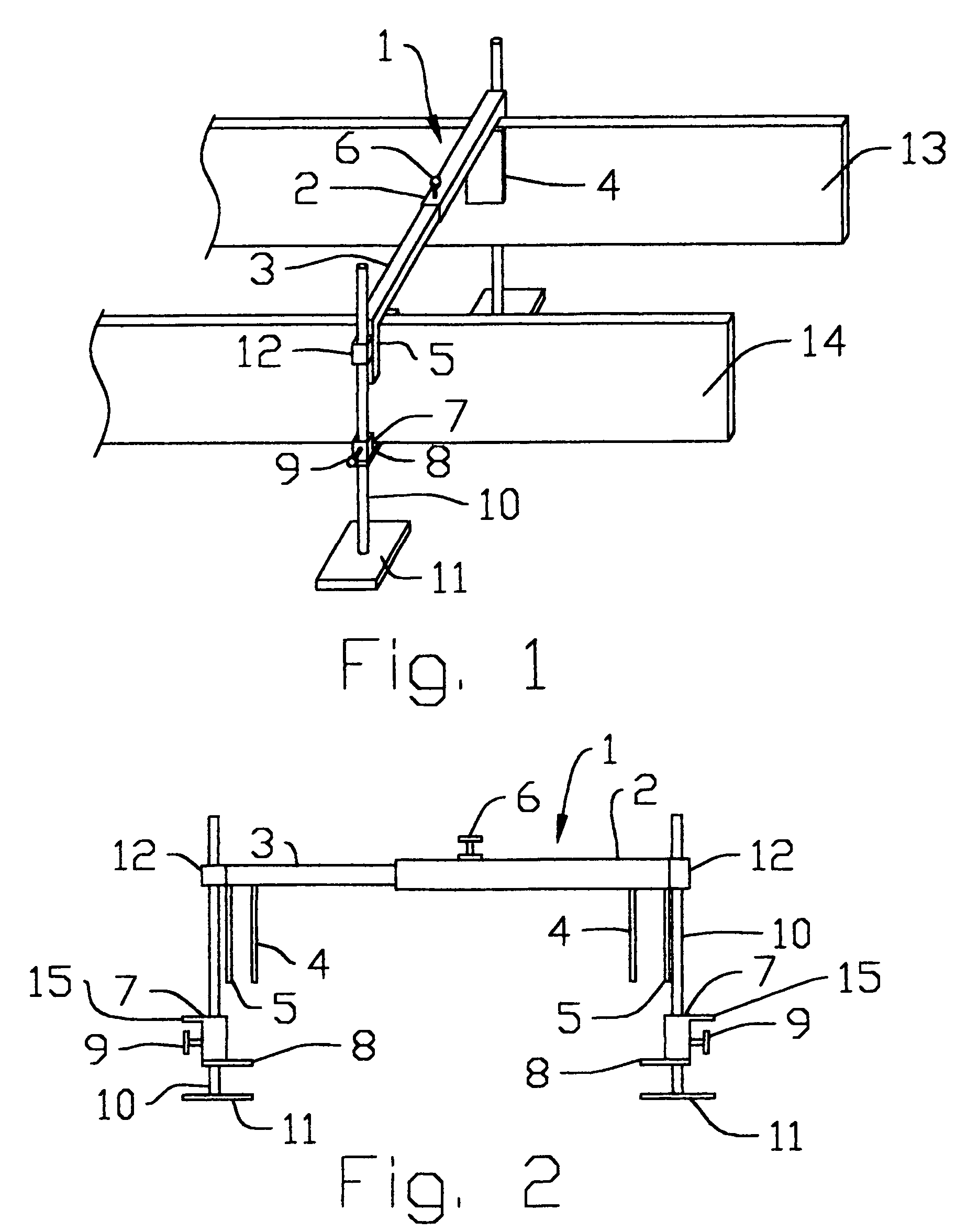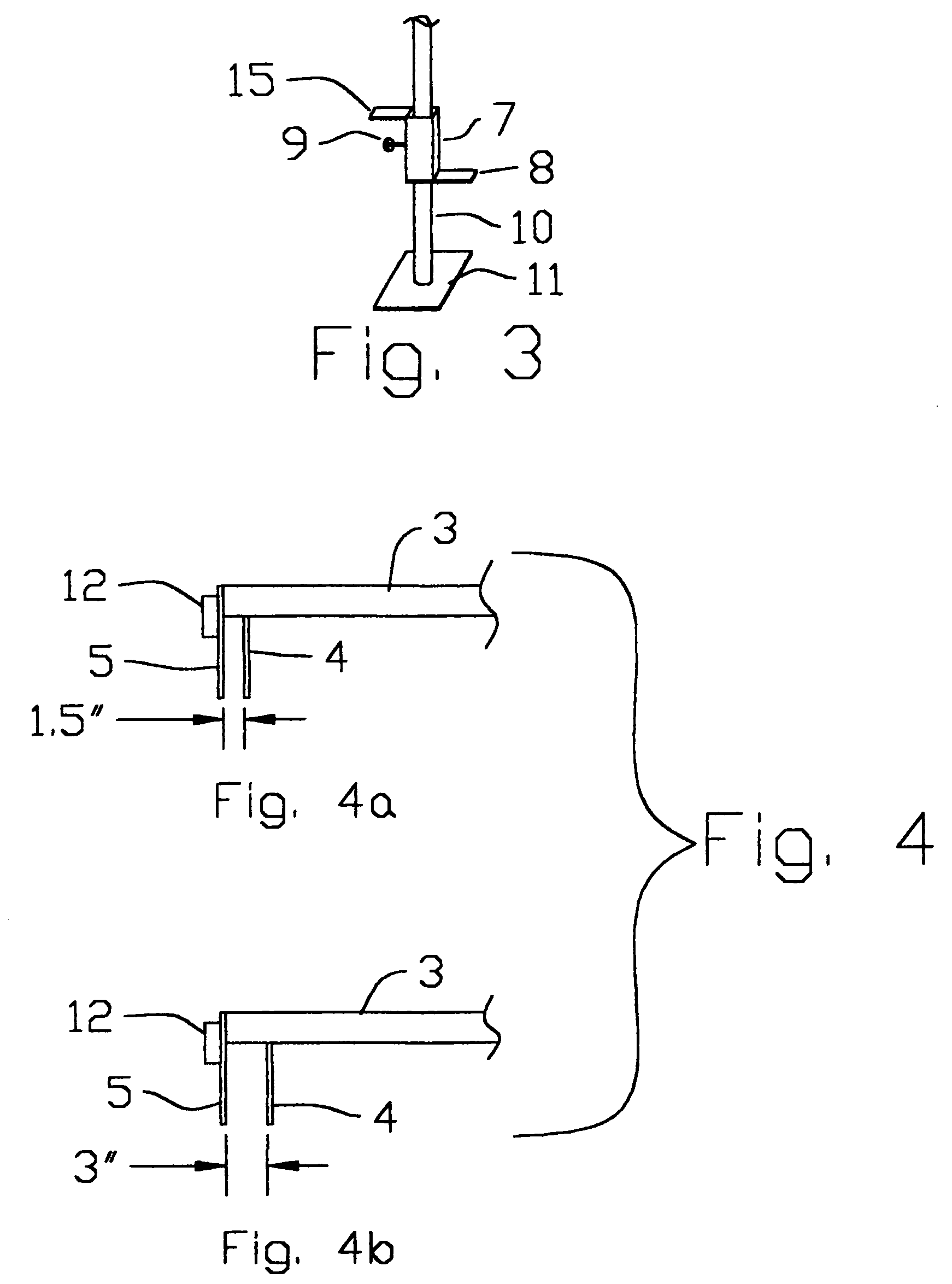Form frame for concrete footings having means to prevent relative movement between the form boards and the ground surface
a technology of concrete footings and form frames, which is applied in the field of laying up forms, can solve the problems of large labor costs, blowouts, and loss of money to the contractor, and achieve the effects of high strength, easy to put into place, and simple to take down and make ready
- Summary
- Abstract
- Description
- Claims
- Application Information
AI Technical Summary
Benefits of technology
Problems solved by technology
Method used
Image
Examples
Embodiment Construction
[0011]Referring to FIG. 1, frame 1 is shown in use on concrete footing forms 13 and 14. Forms 13 and 14 are typically made of dimensional lumber, but may be made of heavy weight plywood or even of lightweight metal such as aluminum. Form 14 determines the inner wall of the concrete footing while form 13 determines the outer wall of the concrete footing. Frame 1 consists of square tubular steel member 3 which telescopically slides within square tubular steel member 2, allowing for adjustment of the frame 1 to accommodate any width of form setup. Once adjusted to the desired width, locking screw 6 is tightened through member 2 and against member 3 to lock member 3 in fixed position relative to member 2. Tubular steel member 3 could also have holes or indents at fixed positions along its length to allow for specific adjustments, such as widths of 16 inches, 18 inches, 24 inches, etc. Tubular steel members 2 and 3 each have at their outer ends bracket members 4 and 5. FIG. 2 shows detai...
PUM
 Login to View More
Login to View More Abstract
Description
Claims
Application Information
 Login to View More
Login to View More - R&D
- Intellectual Property
- Life Sciences
- Materials
- Tech Scout
- Unparalleled Data Quality
- Higher Quality Content
- 60% Fewer Hallucinations
Browse by: Latest US Patents, China's latest patents, Technical Efficacy Thesaurus, Application Domain, Technology Topic, Popular Technical Reports.
© 2025 PatSnap. All rights reserved.Legal|Privacy policy|Modern Slavery Act Transparency Statement|Sitemap|About US| Contact US: help@patsnap.com



